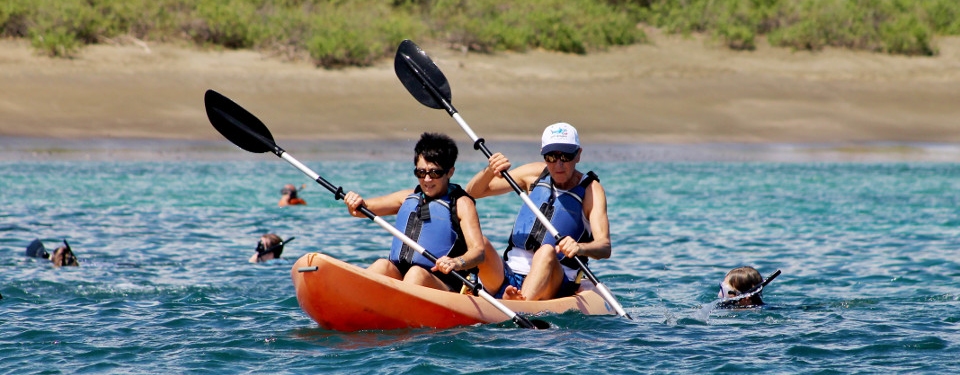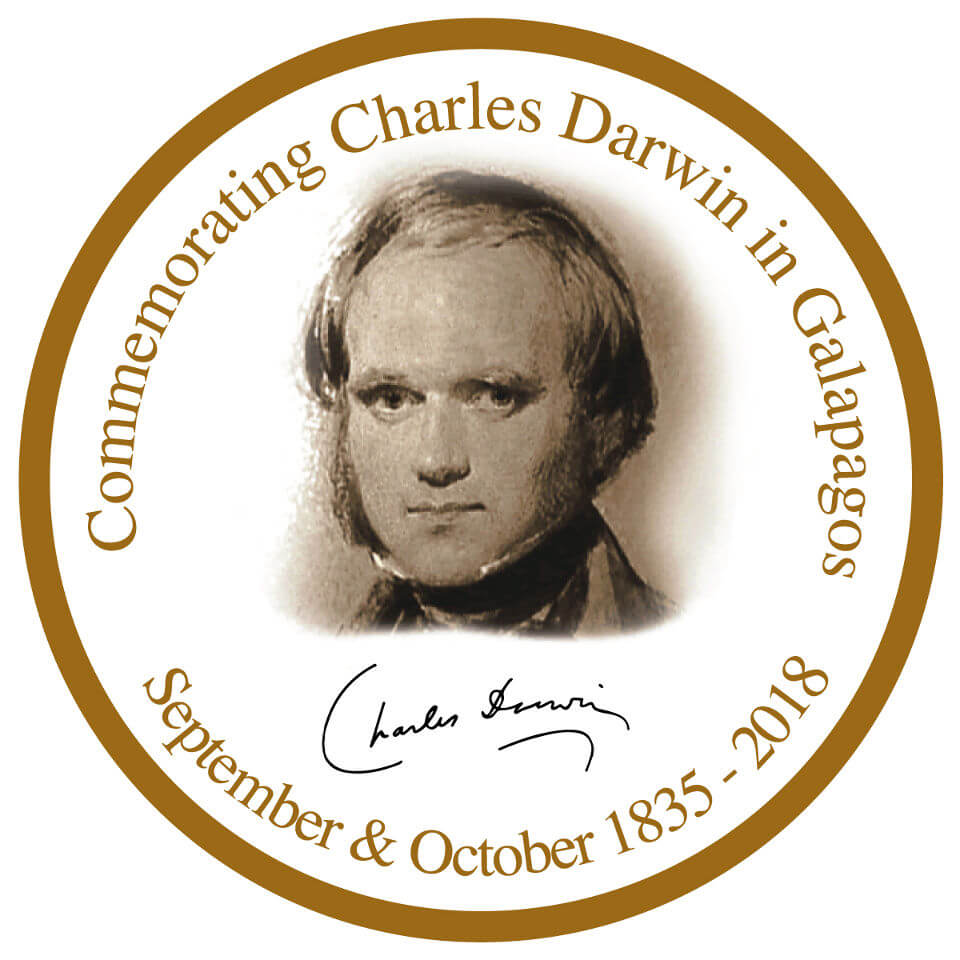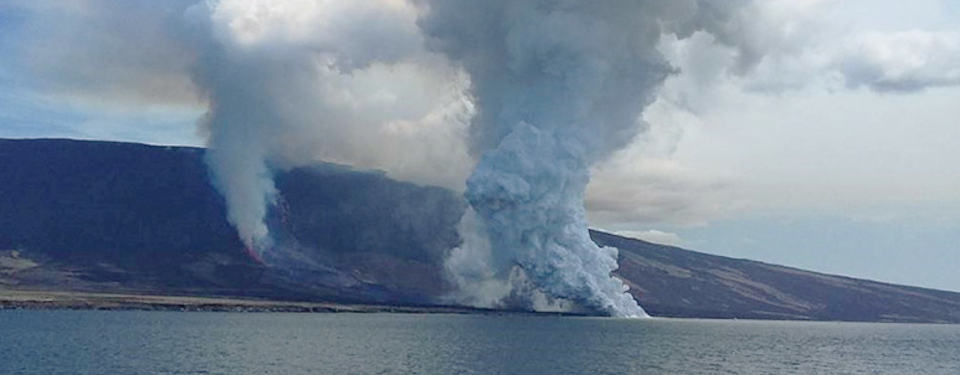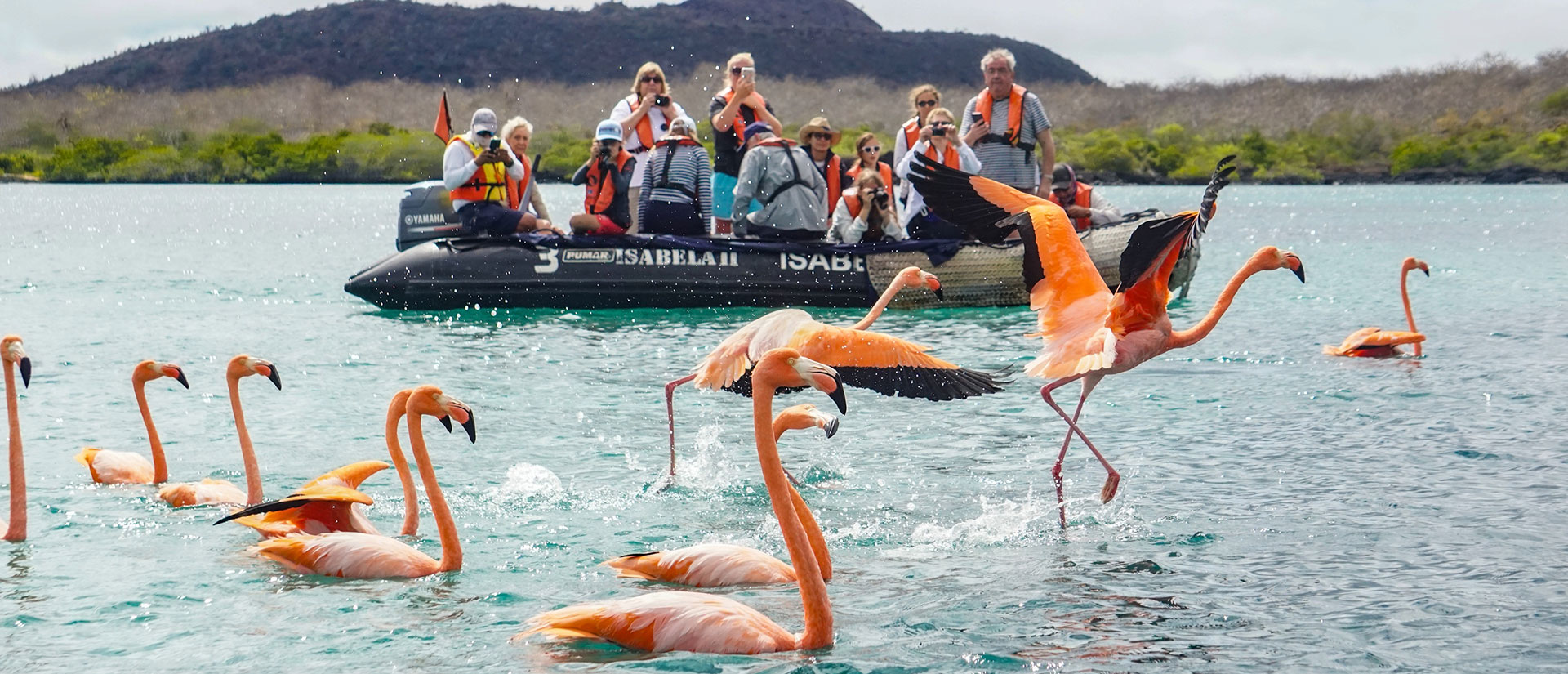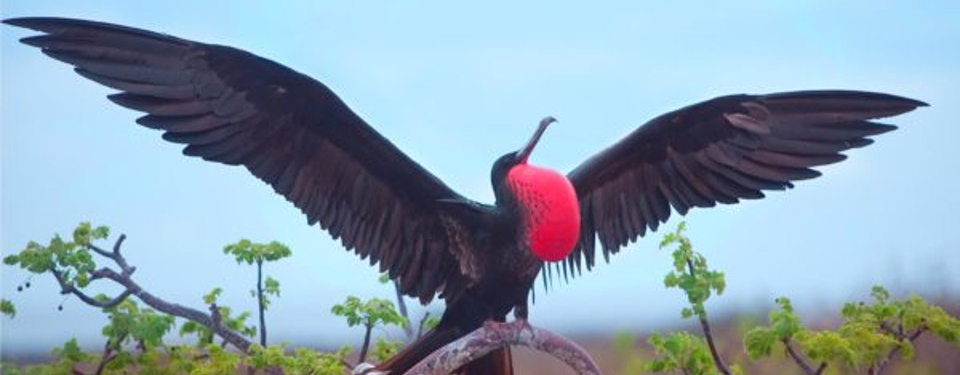
You can see frigatebirds all over the islands Galapagos Islands. There are a couple of places in particular that are perfect to see them in action: Genovesa, North Seymour, and San Cristobal Islands. They’re great places to observe great and magnificent frigate birds. Especially in the highlands of San Cristobal, there is a freshwater lake where many frigatebirds go to wash the salt water off of their wings. They dive down to the surface of the icy water of the volcanic crater lake for a brief moment before swerving back up into the air. This act of bathing actually helps keeps the birds’ wings from becoming saturated and filled with salt after they’ve come into contact with ocean water.
If you are particularly attentive (and particularly lucky!) you may get the chance to see a frigatebird trying out kleptoparasitism. In any case, it’s always a beautiful opportunity to watch these graceful birds flying through the air. The Galapagos is a birdwatcher’s paradise like no other! In the islands, you have a chance of viewing magnificent birds and other wildlife unlike in any other part of the world!
 hbspt.cta.load(4187609, ’65e84efc-793e-49da-a605-534c5b69ae82′, {});
hbspt.cta.load(4187609, ’65e84efc-793e-49da-a605-534c5b69ae82′, {});
Frigatebirds are coastal birds, but they don’t like diving into the water. Unlike other seabirds like boobies or pelicans, the frigatebird’s wings are not water-resistant. This limitation causes them to take extreme measures: Frigatebirds are infamous for stealing food from other birds in the air.
Because of this behavior, frigatebirds are compared to pirates. The word frigate actually refers to a kind of vessel that was commonly used by pirates. When animals steal food from other animals, this is called kleptoparasitism.
Frigatebirds are actually very skilled fliers. They have forked tails and broad wingspans that give them extra agility in the air. This is how they are able to outmaneuver birds like boobies and tropicbirds in the fight for food.
There are two species of Frigate Birds, and they live side-by-side: The magnificent frigate is more pelagic (foraging for fish out at sea for long periods of time). The great frigate is more coastal (they catch most of their food up in the air by robbing other seabirds).
Both Great and Magnificent birds are large blackbirds. The males are identifiable by their iconic, red leathery throat pouch (also called “red gular sac”). And it takes around a half-hour for these sacks to inflate. Great frigate males inflate a shorter gular sac, but of a warmer red color. Additionally, male great frigatebirds have a green sheen on their shoulder plumage. Magnificent male frigatebirds have a purple sheen.
Furthermore, magnificent frigate females haves a black triangle of feathers running down from the base of the chin to the center of their white chests. As a result, a white “M” is visible from below. Great frigate females have white all the way up their chins.
Males inflate this red pouch as a courtship display intended to attract the female. If the male is fortunate enough to be selected amongst a crowd of other males doing the same, the female will fly down and partake in the mating ritual with that specific one.
In this video you can see how the courting process occurs between female and male frigates:
Video source: BBC
Make sure to ask your naturalist guide about other fascinating facts about all of the Galapagos Big15 wildlife you will see on your expedition cruise!
